Chaga is used for the prevention and treatment of cancer
1. Lanostane-type triterpenoids from the sclerotia of Inonotus obliquus possessing anti-tumor promoting activity.
Author information:

- Department of Medicinal Chemistry, Osaka University of Pharmaceutical Sciences, 4-20-1 Nasahara, Takatsuki, Osaka, Japan
- Taji S, Yamada T, Wada S, Tokuda H, Sakuma K, Tanaka R
Abstract
Two new lanostane-type triterpenoids, 1 and 2 besides two known lanostane-type triterpenoids, 3 and 4 were isolated from the sclerotia of Inonotus obliquus. Their structures were determined to be lanosta-8,23E-diene-3beta,22R,25-triol (1) and lanosta-7:9(11),23E-triene-3beta,22R,25-triol (2) by spectral data. These compounds were tested for their anti-tumor-promoting activity using a short-term in vitro assay for EBV-EA activation induced by TPA. Compounds 1, 2 and 4 were stronger than the positive control, oleanolic acid. The most abundant compound 4 was investigated for the inhibitory effect in a two-stage carcinogenesis test on mouse skin using DMBA as an initiator and TPA as a promoter. Compound 4 was found to exhibit the potent anti-tumor promoting activity in the in vivo carcinogenesis test.
https://www.ncbi.nlm.nih.gov/pubmed/18387711
2. Anti-tumor effect of Inonotus obliquus in xenograft animals with EBV+human gastric carcinoma.
Author information:

- College of Pharmacy, Duksung Women’s University, Seoul 01369, Republic of Korea
- Seulki Lee and Hyosun Cho
Abstract
Inonotus obliquus is a medicinal mushroom with a variety of biological activities. It has reported to have strong anti-cancer, antioxidant and anti-inflammatory properties. EBV+ gastric carcinoma is one of the most common EBV-associated cancers that were caused by latent EBV infection. In this study, we investigated the anti-cancer effects of ethanol extract of I. obliquus using in vivo xenograft animal models implanted with EBV+ human gastric carcinoma (SNU719). We also explored the molecular mechanisms responsible for its anti-cancer activity. The result indicated that the extract of I. obliquus had an anti-cancer effect in in vivo xenograft mice with EBV+ gastric carcinoma (SNU719). Extract of I. obliquus also showed a great effect on inducing the expression of p53, p21 and Bax in tumor tissue derived from EBV+ human gastric carcinoma, and these were correlated with increased expressions of the cleaved forms of caspase-9 and Parp. Also, I. obliquus attenuated the expression of viral proteins, BZLF-1 and LMP-2 in tumor tissue from EBV+human gastric carcinoma.
http://www.msk.or.kr/mskfile/52(4)_12_482-486.pdf
3. Chaga mushroom (Inonotus obliquus) induces G0/G1 arrest and apoptosis in human hepatoma HepG2 cells.
Author information:

- Myung-Ja Youn, Jin-Kyung Kim, Seong-Yeol Park, Yunha Kim, Se-Jin Kim, Hong Seob So, Raekil Park, Vestibulocochlear Research Center, Wonkwang University School of Medicine, Jeonbuk, Korea
- Ki-Young Kim, Ming-Xun Cui, College of Human Environmental Science, Wonkwang University, Jeonbuk, Korea
- Jin Seok Lee, Kyu Yun Chai, Department of Bionanochemistry, College of Natural Science, Wonkwang University, Jeonbuk, Korea
- Hye-Jung Kim, Department of Family Medicine, Wonkwang University Hospital, Wonkwang University, Jeonbuk, Korea
- Correspondence to: Raekil Park, MD, PhD, Vestibulocochlear Research Center, Wonkwang University School of Medicine, Shinyoung-dong, Iksan, Jeonbuk, Korea
- Myung-Ja Youn, Jin-Kyung Kim, Seong-Yeol Park, Yunha Kim, Se-Jin Kim, Jin Seok Lee, Kyu Yun Chai, Hye-Jung Kim, Ming-Xun Cui, Hong Seob So, Ki-Young Kim, and Raekil Park
Abstract
AIM: To investigate the anti-proliferative and apoptotic effects of Chaga mushroom (Inonotus obliquus) water extract on human hepatoma cell lines, HepG2 and Hep3B cells.
METHODS: The cytotoxicity of Chaga extract was screened by 3-[4,5-dimethylthiazol-2-yl]-2, 5-diphenyltetrazolium bromide (MTT) assay. Morphological observation, flow cytometry analysis, Western blot were employed to elucidate the cytotoxic mechanism of Chaga extract.
RESULTS: HepG2 cells were more sensitive to Chaga extract than Hep3B cells, as demonstrated by markedly reduced cell viability. Chaga extract inhibited the cell growth in a dose-dependent manner, which was accompanied with G0/G1-phase arrest and apoptotic cell death. In addition, G0/G1 arrest in the cell cycle was closely associated with down-regulation of p53, pRb, p27, cyclins D1, D2, E, cyclin-dependent kinase (Cdk) 2, Cdk4, and Cdk6 expression.
CONCLUSION: Chaga mushroom may provide a new therapeutic option, as a potential anticancer agent, in the treatment of hepatoma.
https://www.ncbi.nlm.nih.gov/pmc/articles/PMC2681140/
4. Absolute stereostructures of inoterpenes A–F from sclerotia of Inonotus obliquus.
Author information:

- Kyoto Pharmaceutical University, Misasagi, Yamashina-ku, Kyoto, Japan
- Keitenkai Tohwa Hospital, 1-3-1 Moritsune honmachi, Minami-ku, Kokura, Kitakyusyu, Japan
- Seikou Nakamura, Junko Iwami, Hisashi Matsuda, Shuichi Mizuno, Masayuki Yoshikawa
Abstract
Six new lanostane-type triterpenes, inoterpenes A (1), B (2), C (3), D (4), E (5), and F (6), were isolated from the sclerotia of Inonotus obliquus together with six known constituents. The chemical structures of new triterpenes 1–6 were characterized on the basis of chemical and physicochemical evidence including the application of the modified Mosher’s method.
https://www.researchgate.net/
5. Antimitotic activity of aqueous extracts of Inonotus obliquus.
Author information:

- Department of Pharmacognosy, Silesian Medical Academy, Sosnowiec, Poland.
- Burczyk J, Gawron A, Slotwinska M, Smietana B, Terminska K.
Abstract
The cytotoxic effect of two aqueous extracts of Inonotus obliquus on human cervical uteri cancer cells (Hela S3) in vitro was evaluated. It was concluded that Inonotus extracts at a concentration of 10 micrograms/ml to 2000 micrograms/ml inhibited cancer cells growth. In cultures with extracts of the fungus a decrease of the cell proteins and mitotic index was observed. Moreover, the extracts disturbed mitoses by elevating the number of mitotic cells in metaphase. Aqueous extracts of Inonotus effected not only mitoses but also the 8/G phase of the cell cycle.
https://www.ncbi.nlm.nih.gov/pubmed/8942059
6. Inhibitory Effect of Chaga (Inonotus obliquus) on Tumor Promotion in Two-Stage Mouse Skin Carcinogenesis
Author information:

- Research Unit of Selfmedication, School of Pharmacy, Nihon University, 7–7–1, Narashinodai, Funabashi-shi, Chiba , Japan
- Ayako Akita, Ken Yasukawa
Discussion
Oral administration of Chaga inhibited tumor promotion by TPA following initiation with DMBA in mouse skin. Polyphe- nolics, triterpenoids and polysaccharides have already been reported from the sclerotium of Chaga. Polyphenolics found in Chaga have been reported to exhibit antioxidant activity. Addi- tionally, many lanostane-type triterpenoids have been isolated from Chaga; inotodiol15) and 3β-hydroxylanosta-8,24-dien-21- al16) suppressed tumor promotion in two-stage mouse skin car- cinogenesis. In particular, polysaccharides have been reported to have many physiological activities, including cancer prevention17).
Mushrooms are valued as both an edible and a medicinal resource, and anti-tumor substances have been identified in several mushroom species. Polysaccharides are the best known and most potent mushroom-derived substances with antitumor and immunomodulating properties. In particular, it has been reported that aqueous extracts of Chaga inhibited cell growth in a dose-dependent manner, which was accompanied by G0/G1 arrest and apoptotic cell death18). Additionally, aqueous extracts of Chaga prevented the inhibition of gap junctional intercellular communication through the inactivation of ERK1/ 2 and p38 MAP kinase19). Furthermore, a methanol extract of Chaga was found to significantly inhibit the production of nitric oxide (NO), prostaglandin E2 (PGE2) and tumor necrosis factor-α (TNF-α)20).
In an effort to screen for new cancer inhibitors that can be used as chemopreventive agents, we have intentionally chosen non-toxic compounds. In the present study, Chaga did not exhibit toxicity by oral administration. Furthermore, we have demonstrated that Chaga acts as a moderate inhibitor of tumor promotion. Therefore, Chaga is regarded as a material that has potential in CAM for the prevention of cancer.
https://www.jstage.jst.go.jp/article/jcam/8/1/8_1_29/_pdf
7. Inonotus Obliquus Suppresses Proliferation of Colorectal Cancer Cells and Tumor Growth in Mice Models by Downregulation of Beta-Catenin/Nf-Kappa B-Signaling Pathways.
Author information:
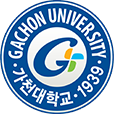


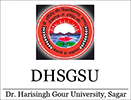
- Gashon Institute of Pharmaceutical Sciences, Gashon University, Incheon, Republic of Korea
- Department of Food and Nutrition, Division of Natural Scieces, Chung-Ang University, Ansung, Republic of Korea
- Division of Cancer Biology, National Cancer Center, Goyang-si, Republic of Korea
- Carcinogenesis Branch, Division of Cancer Epidemiology and Prevention, National Cancer Center, Goyang-si, Republic of Korea
- Department of Zoology, School of Biological Sciences, Dr. Harisingh Gour Cental University, Sagar, India
- S.K. Mishra6, J-H. Kang, K-H. Song, M.S. Park, D-K. Kim, Y-J. Park, C. Choi, H.M. Kim, M.K. Kim, S.H. Oh
Abstract
Chaga mushroom (Inonotus obliquus) has been used as a folk remedy for several illnesses including gastrointestinal disorders. We recently reported the potent anti-inflammatory effect of chaga extract in experimental colitis. However, its effects on colorectal cancer (CRC) have not been clearly elucidated. We investigated the effects of an aqueous extract of Inonotus obliquus (IOAE) in vitro in HCT116 and DLD1 cell lines and in vivo for adenoma in APC(Min/+) mice and colitis-associated colon cancer in AOM/DSS-treated mice. Results show that IOAE suppressed the proliferation of both cell lines, and inhibited the growth of intestinal polyps in APC(Min/+) and colon tumors in AOM/DSS-treated mice. IOAE induced mitochondrial intrinsic pathway of apoptosis, autophagy, and S phase cell cycle arrest. IOAE suppressed the expression levels of iNOS and Cox-2 and mRNA levels of pro-inflammatory cytokines (IL-6, IL-1 beta, TNF-alpha and IFN-gamma) in the intestine of mice models. IOAE suppressed the nuclear levels of P-catenin and inhibited its downstream targets (cyclin D1 and c-Myc) along with CRC oncogene CDK8. IOAE inhibited the expression of NF-kappa B at cytoplasmic and nuclear levels. Our results demonstrate that IOAE possess potent anti-inflammatory and anti-proliferative properties through downregulation of Wnt/beta-catenin and NF-kappa B pathways. Considering recent anticancer approaches involving natural products with minimal side effects, we advocate that Inonotus obliquus could be a beneficial supplement in prevention of colorectal cancer.
https://www.researchgate.net/
8. Chemical composition and antitumor activity of polysaccharide from Inonotus obliquus.
Author information:
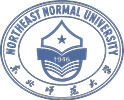
- Laboratory of Biochemistry and Molecular Biology, School of Life Science, Northeast Normal University, Changchun, China. School of Life Science, Daqing Normal College, Daqing, China. Ji Lin Ginseng Academy, Chang Chun University of Chinese Medicine, Changchun, China
- Lixia Zhang, Cong Fan, Songchen Liu, Zhenfeng Zang, Lili Jiao and Liping Zhang
Conclusions
In summary, the results from experiment in vivo showed that AIOPA (the alkaline soluble polysacchride AIOPA isolated and purified from chaga) could not only significantly inhibit the growth of sarcoma 180, but also remarkably increased thymus, spleen and lymphoid organ weight and raised the level of TNF-a. The results in vitio of study showed that AIOPA could not only promote lymphocyte transformation and multiplication and enhance phagocytic function of macrophage, but also remarkably promoted the level of NO, iNO and TNF-a. These results suggested that AIOPA could improve both specific and non-specific cellular immune response. This study also provided evidences to support the therapeutic effects of AIOPA for treatment of cancer in China. At present, detailed work on structurefunction relationship are in progress.
http://www.academicjournals.org/
9. Chaga in oncology.
Author information:

- N. Blokhin Russian Cancer Research Center RAMS, Moscow
- Ja. Shashkina, P. N. Shashkin, A. V. Sergeev
Abstract
Review is devoted to the discussion of possibilities to use preparations of Chaga (PCH) in combination with traditional therapy (surgery, radio-chemotherapy) of cancer patients in order to improve the therapeutic effect. The experimental studies and clinical trials PCH in patients with a variety of malignant tumors stage IV are analyzed. PCH can abate cancerous pain, increase appetite and body weight, normalize physiological functions and biochemical values, improve the quality of life in cancer patients (without cachexia). PCH are safety and can increase longevity of patients at long application (1 year and longer). The mechanism of PCH’ activity is discussed.
10. An unusual lanostane-type triterpenoid, spiroinonotsuoxodiol, and other triterpenoids from Inonotus obliquus.
Author information:

- Laboratory of Medicinal Chemistry, Osaka University of Pharmaceutical Sciences, Takatsuki, Osaka, Japan
- Handa N, Yamada T, Tanaka R.
Abstract
An unusual lanostane-type triterpenoid, spiroinonotsuoxodiol (1), and two lanostane-type triterpenoids, inonotsudiol A (2) and inonotsuoxodiol A (3), were isolated from the sclerotia of Inonotus obliquus. Their structures were determined to be (3S,7S,9R)-3,7-dihydroxy-7(8-->9)abeo-lanost-24-en-8-one (1), lanosta-8,24-dien-3beta,11beta-diol (2), and (22R)-3beta,22-dihydroxylanosta-8,24-dien-11-one (3) on the basis of NMR spectroscopy, including 1D and 2D ((1)H-(1)H COSY, NOESY, HMQC, HMBC) NMR, and FABMS. Compounds 1-3 showed moderate activity against cultured P388, L1210, HL-60 and KB cells.
https://www.ncbi.nlm.nih.gov/pubmed/20691456
11. Progress on Understanding the Anticancer Mechanisms of Medicinal Mushroom: Inonotus Obliquus.
Author information:
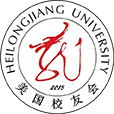
- Key Laboratory of Microbiology, Life Science College, Heilongjiang University, Harbin, China
- Fu-Qiang Song, Ying Liu, Xiang-Shi Kong, Wei Chang, Ge Song.
Abstract
Chemical investigations have shown that I. obliquus produces a diverse range of secondary metabolites, including phenolic compounds, melanins, and lanostane-type triterpenoids. Among these are active components for antioxidant, antitumoral, and antiviral activities and for improving human immunity against infection of pathogenic microbes. Importantly, their anticancer activities have become a hot recently, but with relatively little knowledge of their modes of action. Some compounds extracted from I. obliquus arrest cancer cells in the G0/G1 phase and then induce cell apoptosis or differentiation, whereas some examples directly participate in the cell apoptosis pathway. In other cases, polysaccharides from I. obliquus can indirectly be involved in anticancer processes mainly via stimulating the immune system. Furthermore, the antioxidative ability of I. obliquus extracts can prevent generation of cancer cells. In this review, we highlight recent findings regarding mechanisms underlying the anticancer influence of I. obliquus, to provide a comprehensive landscape view of the actions of this mushroom in preventing cancer.
https://www.ncbi.nlm.nih.gov/pubmed/23679238
https://yadi.sk/i/WS4jhZww3JzUeV
12. Chemical constituents from Inonotus obliquus and their antitumor activities.
Author information:


- Department of Natural Products Chemistry, School of Traditional Chinese Materia Medica, Key Laboratory of Structure-Based Drug Design & Discovery, Ministry of Education, Shenyang Pharmaceutical University, China.
- Institute of Pharmacy, Henan University, China. School of Chinese Materia Medica and Tianjin State Key Laboratory of Modern Chinese Medicine, Tianjin University of Traditional Chinese Medicine, China
- Zhao F, Xia G1,3, Chen L, Zhao J, Xie Z, Qiu F, Han G
Abstract
Four new lanostane-type triterpenes (inonotusanes D-G, 1-4), including a 24,25,26,27-tetranorlanostane, together with 11 known compounds (5-15), including 7 lanostane derivatives, 2 steroids and 2 aromatic compounds, were isolated from the sclerotia of Inonotus obliquus. Their structures were elucidated by 1D and 2D NMR spectroscopy and HRMS. To our knowledge, 1 is the first 24,25,26,27-tetranorlanostane-type triterpenoid from fungus, and this is the first time that 31-member lanostane-type triterpenes, 5 and 6, have been isolated from the sclerotia of I. obliquus instead of from its submerged culture. 7 and 8 are also new isolates of this genus. Compounds 1, 8, 12 and 13 exhibited strong cytotoxicity against the 4T1 (mouse breast cancer) cell line, with IC50 9.40, 7.79, 9.06 and 9.31 μM, respectively. 8, 12 and 13 also exhibited strong cytotoxicity against the the MCF-7 (human breast cancer) cell line, with IC50 8.35-9.01 μM.
https://www.ncbi.nlm.nih.gov/pubmed/27180084
13. Progress of research on Inonotus obliquus.
Author information:

- Deptment of Pathology, Jilin Medical College, China
- Zhong XH1, Ren K, Lu SJ, Yang SY, Sun DZ
Abstract
Inonotus obliquus has high nutritional and medicinal value, especially in treating malignant tumors, diabetes, cardiovascular disease and AIDS, attracting significant attention from scholars in recent years. In this paper, the biological characteristics, chemical composition and pharmacologic effects of Inonotus obliquus were summarized. And the applications in medicine and food were introduced. Future research on Inonotus obliquus was also discussed in order to make Inonotus obliquus obtain effective exploitation and satisfy people's demands.
14. Antitumor and immunomodulatory activity of water-soluble polysaccharide from Inonotus obliquus.
Author information:

- State Key Laboratory of Dairy Biotechnology, Technology Center of Bright Dairy & Food Co. Ltd., China
- Fan L, Ding S, Ai L, Deng K.
Abstract
The medicinal mushroom Inonotus obliquus has been used as a folk remedy for a long time in Russia and East-European countries to treat gastrointestinal cancer, cardiovascular disease and diabetes. In our study, a water-soluble polysaccharide (ISP2a) was successfully purified from I. obliquus by DEAE-Sepharose CL-6B and Sepharose CL-6B column chromatography. In vivo ISP2a had not only shown antitumor activity, but also could significantly enhance the immune response of tumor-bearing mice. In addition, ISP2a significantly enhanced the lymphocyte proliferation and increased the production of TNF-α. Results of these studies demonstrated that ISP2a had a potential application as natural antitumor agent with immunomodulatory activity.
https://www.ncbi.nlm.nih.gov/pubmed/22840014
15. Purification, characterization and biological activity of a novel polysaccharide from Inonotus obliquus.
Author information:

- School of Biology and Food Engineering, Changshu Institute of Technology, China
- Chen Y, Huang Y, Cui Z, Liu J
Abstract
A novel water-soluble polysaccharide IP3a was successfully isolated and purified from I. obliquus by DEAE-cellulose, Sepharose CL-6B and Sephadex G-200 column chromatography. Chemical characterization and antitumor and immunoregulatory activity of IP3a were investigated. IP3a consisted of rhamnose, arabinose, glucose and galactose in a molar ratio of 2.5:4.6:1.0:2.6 with an average molecular weight of 48,820 Da. IP3a exhibited no significant antitumor activities in vitro. However, IP3a could not only inhibit the growth of transplantable Jurkat tumor in mice significantly, but also could enhance the splenocyte proliferation and lymphocyte proliferation induced by ConA and LPS in a dose-dependent manner. At the same time, IP3a could promote cytokine secretion (IL-2, IL-6, IL-12 and TNF-α) and macrophage phagocytosis in mice. In addition, IP3a could increase Bax expression and inhibit Bcl-2 expression significantly. These results suggested that antitumor mechanisms of IP3a might be associated with improving immune response in vivo and inducing apoptosis of tumor cells in vitro. IP3a might be utilized as a potential therapeutic agent against lymphoma cancer with immunomodulatory activity.
https://www.ncbi.nlm.nih.gov/pubmed/26026982
16. Review on Chaga Medicinal Mushroom, Inonotus obliquus (Higher Basidiomycetes): Realm of Medicinal Applications and Approaches on Estimating its Resource Potential.
Author information:
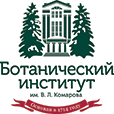
- Ulyanovsk State University, Ulyanovsk, Russia. Laboratory of Systematics and Geography of the Fungi, Komarov Botanical Institute, St. Petersburg, Russia
- Balandaykin ME, Zmitrovich IV
Conclusions
The I. obliquus should be considered as an important issue in medicinal mushroom science.
The prevalence of polyphenolic composites in its granular core and pseudosclerotial plate (combined into sterile conk, so-called Chaga) indicates its clear antioxidant and gene-protective—i.e., anti-cancer, anti-microbial, and anti-hyperglycemic— activities. The glucan and triterpenoid profile of the mushroom allows the use of I. obliquus in some cases as a direct antitumor agent. Further investigations of the fertile stage (basidiomes) of this fungus are necessary for precise knowledge on its polysaccharide profile and action.67 For estimations on I. obliquus as a potential resource, a sufficient circumstance is rather specific distributional profile of the fungus: The sprout coppice stands are richer in fungus in comparison to seedling coppice stands; The older birch stands are richer in fungus in comparison to younger ones; The stands on oligotrophic soil conditions are richer in fungus in comparison to eutrophic ones; The anthropogenic digression of birch stand is positively correlated to fungus frequency. All these factors are connected to birch immune characteristics, including the character of bark perforations. The main productive area potential sources of the fungus are south boreal forests containing Betula pendula and B. pubescens on moderately moist soils which can be reduced to Melico nutantis-Piceetum root type. This forest type is widely distributed in Finland, Belarus, the central part of European Russia, Western and South Siberia, the Russian Far East, and middle Canada.
https://www.ncbi.nlm.nih.gov/pubmed/25746615
https://yadi.sk/i/oCv5SNd63Jzfco
17. Chemical constituents from Inonotus obliquus and their antitumor activities.
Author information:


- Department of Natural Products Chemistry, School of Traditional Chinese Materia Medica, Key Laboratory of Structure-Based Drug Design & Discovery, Ministry of Education, Shenyang Pharmaceutical University, China.
- Institute of Pharmacy, Henan University, China. School of Chinese Materia Medica and Tianjin State Key Laboratory of Modern Chinese Medicine, Tianjin University of Traditional Chinese Medicine, China.
- Zhao F, Xia G, Chen L, Zhao J, Xie Z, Qiu F, Han G
Abstract
Four new lanostane-type triterpenes (inonotusanes D-G, 1-4), including a 24,25,26,27-tetranorlanostane, together with 11 known compounds (5-15), including 7 lanostane derivatives, 2 steroids and 2 aromatic compounds, were isolated from the sclerotia of Inonotus obliquus. Their structures were elucidated by 1D and 2D NMR spectroscopy and HRMS. To our knowledge, 1 is the first 24,25,26,27-tetranorlanostane-type triterpenoid from fungus, and this is the first time that 31-member lanostane-type triterpenes, 5 and 6, have been isolated from the sclerotia of I. obliquus instead of from its submerged culture. 7 and 8 are also new isolates of this genus. Compounds 1, 8, 12 and 13 exhibited strong cytotoxicity against the 4T1 (mouse breast cancer) cell line, with IC50 9.40, 7.79, 9.06 and 9.31 μM, respectively. 8, 12 and 13 also exhibited strong cytotoxicity against the the MCF-7 (human breast cancer) cell line, with IC50 8.35-9.01 μM.
https://www.ncbi.nlm.nih.gov/pubmed/27180084
18. Inonotus obliquus-derived polysaccharide inhibits the migration and invasion of human non-small cell lung carcinoma cells via suppression of MMP-2 and MMP-9.
Author information:
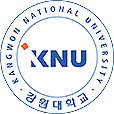
- Department of Bioengineering and Technology, Kangwon National University, Chuncheon, Gangwon-do, Republic of Korea
- Lee KR, Lee JS, Song JE, Ha SJ, Hong EK
Abstract
Polysaccharides isolated from the fruiting body of Inonotus obliquus (PFIO) are known to possess various pharmacological properties including antitumor activity. However, the anti-metastatic effect and its underlying mechanistic signaling pathway involved these polysaccharides in human non-small cell lung carcinoma remain unknown. The present study therefore aimed to determine the anti-metastatic potential and signaling pathways of PFIO in the highly metastatic A549 cells. We found that PFIO suppressed the migration and invasive ability of A549 cells while decreasing the expression levels and activity of matrix metalloproteinase (MMP)-2 and MMP-9. Furthermore, PFIO decreased the phosphorylation levels of mitogen-activated protein kinases (MAPKs) and phosphoinositide 3-kinase (PI3K)/protein kinase B (AKT) as well as the expression level of COX-2, and inhibited the nuclear translocation of nuclear factor κB (NF-κB) in A549 cells. These results suggested that PFIO could suppress the invasion and migration of human lung carcinoma by reducing the expression levels and activity of MMP-2 and MMP-9 via suppression of MAPKs, PI3K/AKT, and NF-κB signaling pathways.
https://www.ncbi.nlm.nih.gov/pubmed/25270791
19. Anti-inflammatory and anticancer activities of extracts and compounds from the mushroom Inonotus obliquus.
Author information:
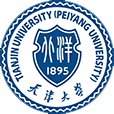
- Tianjin Key Laboratory for Modern Drug Delivery & High-Efficiency, School of Pharmaceutical Science and Technology, Tianjin University, China.
- Ma L, Chen H, Dong P, Lu X.
Abstract
Mushroom Inonotus obliquus (I. obliquus) has been used as functional food and traditional Chinese herbs for long time. An efficient method for bioassay-guided preparative isolation was used for identifying the anti-inflammatory and anticancer constituents in I. obliquus. The petroleum ether and ethyl acetate fractions were found to have significant inhibition effects on NO production and NF-κB luciferase activity in macrophage RAW 264.7 cells and cytotoxicity against human prostatic carcinoma cell PC3 and breast carcinoma cell MDA-MB-231. Six main constituents were isolated from these two fractions and they were identified as lanosterol (1), 3β-hydroxy-8,24-dien-21-al (2), ergosterol (3), inotodiol (4), ergosterol peroxide (5) and trametenolic acid (6). Compound ergosterol, ergosterol peroxide and trametenolic acid showed anti-inflammatory activities and ergosterol peroxide and trametenolic acid showed obviously cytotoxicity on human prostatic carcinoma cell PC3 and breast carcinoma MDA-MB-231 cell. The results obtained in this work might contribute to understanding the biological activity of mushroom I. obliquus for food and drug application.
https://www.ncbi.nlm.nih.gov/pubmed/23561137
20. Characterization of two water-soluble lignin metabolites with antiproliferative activities from Inonotus obliquus.
Author information:

- College of Science, Northwest A&F University, Yangling 712100, Shaanxi, China
- Wang Q, Mu H, Zhang L, Dong D, Zhang W, Duan J.
Abstract
The chaga mushroom, Inonotus obliquus has long been recognized as a remedy for cancer, gastritis, ulcers, and tuberculosis of the bones since the 16th century. Herein we reported the identification of two homogenous biological macromolecules, designated as IOW-S-1 and IOW-S-2 with anti-tumor activities from the hot-water extract of I. obliquus. Their molecular weights were determined to be 37.9 and 24.5kDa by high performance gel permeation chromatography (HPGPC) respectively. Chemical and spectral analysis indicated that both IOW-S-1 and IOW-S-2 were predominant in lignin, along with ∼20% carbohydrates. Examination of cytotoxicity showed that these two lignin-carbohydrate complexes induced cell death in a concentration dependent manner, while this apoptosis induction was largely cell-cycle independent. Further investigation demonstrated that IOW-S-1 or IOW-S-2 inhibited the activation of the nuclear transcription factor in cancer cells. These findings implied that soluble lignin derivatives were one of bioactive components in I. obliquus, and further provided insights into the understanding of molecular basis for diverse medicinal and nutritional values of this mushroom.
https://www.ncbi.nlm.nih.gov/pubmed/25583019
21. Studies on the Anti-cancer Activity of Chaga Mushroom Extract.
Author information:

- Dept. of Oriental Medicine The Graduate School, Dong-Guk University
- Byung-Hyuk Moon, Won-Chul Lee
Abstract
Objectives: This study was to investigate the anti-oxidation and anti-cancer activity of Chaga mushroom extract. Extraction condition optimization and beta-glucan analysis and anti-cancer activity tests were also done.
Methods: Optimum extraction conditions for Chaga mushroom extract were at a temperature of 90 and 2hrs with 10 times of water. Extraction yield and economics were best under these conditions.
Results: Anti-oxidation activity was the highest with the fraction of 100,000 MWCO and IC50 value was 13/ and this value was comparable to that of vitamin E, alpha-tocopherol. Among the fractions from various organic solvents, ethyl acetate fraction showed the highest anti-oxidation activity with IC50 value of 7 / . For anti-cancer activity, chloroform fraction showed little anti-cancer activity and ethyl acetate fraction showed the best anti-cancer activity with IC50 1.5 / for stomach cancer cells. Anti-cancer activities for different molecular weight fractions were the best in the fraction of molecular weight less than 100,000Da, and IC50 values for stomach cancer cells and liver cancer cells were 1.7 and 1.4 / , respectively.
Conclusions: From these results, we can conclude that the extract of Chaga mushroom could be a good source for functional food and natural anti-cancer medicine.
https://www.jkom.org/upload/30-4%2001%2001-12.pdf
22. Continuous intake of the Chaga mushroom (Inonotus obliquus) aqueous extract suppresses cancer progression and maintains body temperature in mice.
Author information:

- Center for Biotechnology, Showa University, Tokyo, Japan
- Center for Laboratory Animal Science, Showa University, Tokyo, Japan
- College of Art and Science at Fujiyoshida, Showa University, Tokyo, Japan
- Department of Anatomy, School of Medicine, Showa University, Tokyo, Japan
- Satoru Arata, Jun Watanabe, Masako Maeda, Masato Yamamoto, Hideto Matsuhashi, Mamiko Mochizuki, Nobuyuki Kagami, Kazuho Honda and Masahiro Inagakic
Abstract
Inonotus obliquus is a medicinal mushroom with a variety of biological activities. It has reported to have strong anti-cancer, antioxidant and anti-inflammatory properties. EBV+ gastric carcinoma is one of the most common EBV-associated cancers that were caused by latent EBV infection. In this study, we investigated the anti-cancer effects of ethanol extract of I. obliquus using in vivo xenograft animal models implanted with EBV+ human gastric carcinoma (SNU719). We also explored the molecular mechanisms responsible for its anti-cancer activity. The result indicated that the extract of I. obliquus had an anti-cancer effect in in vivo xenograft mice with EBV+ gastric carcinoma (SNU719). Extract of I. obliquus also showed a great effect on inducing the expression of p53, p21 and Bax in tumor tissue derived from EBV+ human gastric carcinoma, and these were correlated with increased expressions of the cleaved forms of caspase-9 and Parp. Also, I. obliquus attenuated the expression of viral proteins, BZLF-1 and LMP-2 in tumor tissue from EBV+ human gastric carcinoma.
https://www.ncbi.nlm.nih.gov/pmc/articles/PMC4946216/
23. Anticancer activity of subfractions containing pure compounds of Chaga mushroom (Inonotus obliquus) extract in human cancer cells and in Balbc/c mice bearing Sarcoma-180 cells.
Author information:

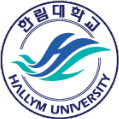
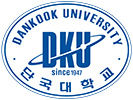
- Department of Food Science and Biotechnology, School of Biotechnology and Bioengineering, Kangwon National University, 192-1 Hyoja-dong, Chuncheon, Korea.
- Department of Food and Nutrition, Hallym University, Chuncheon 200-702, Korea.
- Department Food Science and Nutrition, Dankook University, Gyunggi, Korea.
- Chung MJ, Chung CK, Jeong Y, Ham SS
Abstract
The Chaga mushroom (Inonotus obliquus) has been used in folk medicine to treat cancers. However, limited information exists on the underlying anticancer effects of the major component of I. obliquus in vivo. We hypothesize that the pure compounds (3beta-hydroxy-lanosta-8,24-dien-21-al, inotodiol and lanosterol, respectively) separated from I. obliquus would inhibit tumor growth in Balbc/c mice bearing Sarcoma-180 cells (S-180) in vivo and growth of human carcinoma cells in vitro. To test this hypothesis, the growth inhibition of each subfraction isolated from I. obliquus on human carcinoma cell lines (lung carcinoma A-549 cells, stomach adenocarcinoma AGS cells, breast adenocarcinoma MCF-7 cells, and cervical adenocarcinoma HeLa cells) was tested in vitro. Then, after S-180 implantation, the mice were fed a normal chow supplemented with 0, 0.1 or 0.2 mg of subfraction 1, 2 or 3 per mouse per day. All of the subfractions isolated from I. obliquus showed significant cytotoxic activity against the selected cancer cell lines in vitro. Subfraction 1 was more active than subfraction 2 and subfraction 3 against the A549, AGS and MCF-7 cancer cell lines in vitro. In in vivo results, subfraction 1 isolated from I. obliquus at concentrations of 0.1 and 0.2 mg/mouse per day significantly decreased tumor volume by 23.96% and 33.71%, respectively, as compared with the control. Subfractions 2 and 3 also significantly inhibited tumor growth in mice bearing S-180 as compared with the control mouse tumor. Subfraction 1 isolated from I. obliquus showed greater inhibition of tumor growth than subfractions 2 and 3, which agrees well with the in vitro results. The results suggest that I. obliquus and its compounds in these subfractions isolated from I. obliquus could be used as natural anticancer ingredients in the food and/or pharmaceutical industry.
https://www.ncbi.nlm.nih.gov/pmc/articles/PMC2895696/
24. Potential anticancer properties of the water extract of Inonotus [corrected] obliquus by induction of apoptosis in melanoma B16-F10 cells.
Author information:

- VestibuloCochlear Research Center and Department of Microbiology, Wonkwang University, Iksan, Jeonbuk, South Korea.
- Youn MJ, Kim JK, Park SY, Kim Y, Park C, Kim ES, Park KI, So HS, Park R.
Abstract
ETHNOPHARMACOLOGICAL RELEVANCE: Inonotus obliquus (Chaga mushroom), one of the widely known medicinal mushrooms, has been used to treat various cancers in Russia and most of Baltic countries for many centuries.
AIM OF THE STUDY: To examine the anti-proliferative effects of Inonotus obliquus extract on melanoma B16-F10 cells. Furthermore, to assess the anti-tumor effect of Inonotus obliquus extract in vivo in Balb/c mice.
MATERIALS AND METHODS: The water extract of Inonotus obliquus was studied for anti-proliferative effects on the growth and morphology of B16-F10 melanoma cells and for anti-tumor effect using in vivo in Balb/c mice.
RESULTS: Inonotus obliquus extract not only inhibited the growth of B16-F10 cells by causing cell cycle arrest at G(0)/G(1) phase and apoptosis, but also induced cell differentiation. These effects were associated with the down-regulation of pRb, p53 and p27 expression levels, and further showed that Inonotus obliquus extract resulted in a G(0)/G(1) cell cycle arrest with reduction of cyclin E/D1 and Cdk 2/4 expression levels. Furthermore, the anti-tumor effect of Inonotus obliquus extract was assessed in vivo in Balb/c mice. Intraperitoneal administration of Inonotus obliquus extract significantly inhibited the growth of tumor mass in B16-F10 cells implanted mice, resulting in a 3-fold (relative to the positive control, (*)p<0.05) inhibit at dose of 20mg/kg/day for 10 days.
CONCLUSION: This study showed that the water extract of Inonotus obliquus mushroom exhibited a potential anticancer activity against B16-F10 melanoma cells in vitro and in vivo through the inhibition of proliferation and induction of differentiation and apoptosis of cancer cells.
https://www.ncbi.nlm.nih.gov/pubmed/19041933
https://toxnet.nlm.nih.gov/cgi-bin/sis/search2/f?./temp/~B6VNdY:1
25. Effects of inotodiol extracts from inonotus obliquus on proliferation cycle and apoptotic gene of human lung adenocarcinoma cell line A549.
Author information:

- Department of Pathology, Jilin Medical College, Jilin, China
- Zhong XH, Wang LB, Sun DZ.
Abstract:
OBJECTIVE: To observe the proliferation inhibition, apoptosis, and cell proliferation cycle of human lung carcinoma cell line A549 treated with Inotodiol extracts from Inonotus obliquus and explore the possibility of Inotodiol extracts from Inonotus obliquus as a new tumor chemopreventive drug.
METHODS: Human lung cancer cell line A549 was treated with different concentrations of Inotodiol, the effects of Inotodiol on cell apoptosis, the expression of Ki-67, Bcl-2, Bax, and p53 and cell cycle were detected by TUNEL assay, immunohistochemistry, and flow cytometry assay respectively.
RESULTS: Inotodiol extracts had antiproliferation effect on human lung carcinoma cell line A549. The expression of Ki-67 decreased with the increase of Inotodiol concentration and exposure time (P<0.05), in a dose-dependent and time-dependent manner. The typical characteristics of the apoptosis of A549 cells treated with Inotodiol were observed, and the apoptotic rate of A549 cell at 48 h was the highest by TUNEL assay. Inotodiol arrested A549 cells in the S phase, and apoptotic peak was observed by flow cytometry. Immunocytochemistry indicated that the expression of Bcl-2 protein decreased, while the expression of p53 and Bax proteins increased in A549 cells treated with Inotodiol, compared with the control cells (P<0.05).
CONCLUSION: Inotodiol can inhibit proliferation and induce the apoptosis of A549 cells, and its molecular mechanism may be associated with the up-regulating expression of p53 and bax proteins and down-regulating expression of Bcl-2 protein, which arrested A549 cells in S phase.
https://www.ncbi.nlm.nih.gov/pubmed/21359924
26. Inotodiol Inhabits Proliferation and Induces Apoptosis through Modulating Expression of cyclinE, p27, bcl-2, and bax in Human Cervical Cancer HeLa Cells.
Author Information:

- Department of Pathology, Jilin Medical College, Jilin, China
- Li-Wei Zhao, Xiu-Hong Zhong, Shu-Yan Yang, Yi-Zhong Zhang, Ning-Jiang Yang
Abstract
Inonotus obliquus is a medicinal mushroom that has been used as an effective agent to treat various diseases such as diabetes, tuberculosis and cancer. Inotodiol, an included triterpenoid shows significant anti-tumor effect. However, the mechanisms have not been well documented. In this study, we aimed to explore the effect of inotodiol on proliferation and apoptosis in human cervical cancer HeLa cells and investigated the underlying molecular mechanisms. HeLa cells were treated with different concentrations of inotodiol. The MTT assay was used to evaluate cell proliferating ability, flow cytometry (FCM) was employed for cell cycle analysis and cell apoptosis, while expression of cyclinE, p27, bcl-2 and bax was detected by immunocytochemistry. Proliferation of HeLa cells was inhibited by inotodiolin a dose-dependent manner at 24h (r=0.9999, p<0.01). A sub-G1 peak (apoptotic cells) of HeLa cells was detected after treatment and the apoptosis rate with the concentration and longer incubation time (r=1.0, p<0.01), while the percentage of cells in S phase and G2/M phase decreased significantly. Immunocytochemistry assay showed that the expression of cyclin E and bcl-2 in the treated cells significantly decreased, while the expression of p27 and bax obviously increased, compared with the control group (p<0.05). The results of our research indicate that inotodiol isolated from Inonotus obliquus inhibited the proliferation of HeLa cells and induced apoptosis in vitro. The mechanisms may be related to promoting apoptosis through increasing the expression of bax and cutting bcl-2 and affecting the cell cycle by down-regulation the expression of cyclin E and up-regulation of p27. The results further indicate the potential value of inotodiol for treatment of human cervical cancer.
https://www.ncbi.nlm.nih.gov/pubmed/24815470Chaga is a powerful antioxidant and anti-inflammatory properties
1. Antioxidant Small Phenolic Ingredients in Inonotus obliquus.
Author information:
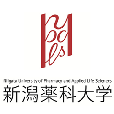
- Niigata University of Pharmacy and Applied Life Science, Japan
- Yuki Nakajima, Yuzo Sato, Tetsuya Konishi
Abstract
Inonotus obliquus (persoon) Pilat (Chaga, in Russia, kabanoanatake in Japan) is a fungus having been used as a folk medicine in Russia and said to have many health beneficial functions such as immune modulating and anti-cancer activities. In the present study, the antioxidant activity of hot water extract (decoction) of Chaga was precisely compared with those of other medicinal fungi (Agaricus blazei Mycelia, Ganoderma lucidum and Phellinus linteus) showing Chaga had the strongest antioxidant activity among fungi examined in terms of both superoxide and hydroxyl radicals scavenging activities. Further determination of the antioxidant potential of isolated fruiting body (brown part) and Sclerotium (black part) revealed the 80% MeOH extract of fruiting body had the highest potential as high as that of Chaga decoction. Finally, seven antioxidant components were isolated and purified from the 80% MeOH extract of Chaga fruiting body, and their chemical structures were determined as small phenolics as follows: 4-hydroxy-3,5-dimethoxy benzoic acid 2-hydroxy-1-hydroxymethyl ethyl ester (BAEE), protocatechic acid (PCA), caffeic acid (CA), 3,4-dihybenzaladehyde (DB), 2,5-dihydroxyterephtalic acid (DTA), syringic acid (SA) and 3,4-dihydroxybenzalacetone (DBL). Notably, BAEE was assigned as the new compound firstly identified from the natural source in the present study.
https://www.jstage.jst.go.jp/article/cpb/55/8/55_8_1222/_article
2. Identification of antioxidants derived from Inonotus obliquus.
Author information:

- Department of Biochemistry-Metabolic Science, Division of Bioregulatory Medicine, Akita University Graduate School of Medicine and Faculty of Medicine, Japan
- Animal Research Laboratory, Bioscience Education-Research Center, Akita University, Japan
- Department of Biochemistry-Metabolic Science, Division of Bioregulatory Medicine, Akita University Graduate School of Medicine and Faculty of Medicine, Japan
- Venture Business Laboratory, Akita University, Japan
- Kumagai Ayako, Koizumi Yukio, Kawagoe Masami, Koyota Souichi, Sugiyama Toshihiro
Abstract
The medicinal mushroom Inonotus obliquus is a traditional and widely used multi-functional fungus. In the present study, the lipophilic fraction of Inonotus obliquus were investigated for their antioxidative activity with hydroxyl radical scavenging activity assays. As a result, two acidic materials had higher antioxidative activity than basic or neutral materials. Furthermore, antioxidative acidic materials including organic acids were isolated by silica gel column chromatography and subsequent preparative high-performance liquid chromatography. Two purified antioxidants, designated compound 1 and 2, were identified as vanillic acid and syringic acid, respectively. Vanillic acid and syringic acid were showed the antioxidative activities with IC_50 values of 59.0 and 2.8 μg/ml, respectively.
http://ci.nii.ac.jp/naid/110009658223
3. Physicochemical properties and antioxidant activity of melanin fractions from Inonotus obliquus sclerotia.
Author information:
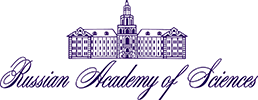
- Russian Academy of Sciences
- Daniil Olennikov, M. Tankhaeva, A. V. Rokhin, S. V. Agafonova
Abstract
Six pigment fractions (total yield 52.13% of raw material mass) were isolated by fractionation of polymeric components of melanin from Inonotus obliquus (Pers.) Pil. sclerotia. The isolated fractions differed in degree of aromaticity, molecular-weight distribution, and content of functional groups according to elemental analysis; UV, IR, and 13C NMR spectroscopy; and gel chromatography. The dominant components were highly aromatic polymers of molecular weight 2–20 kDa with a high content of carboxylic and phenolic hydroxyls. It was found that fractions with a high degree of aromaticity and content of pyrocatechol groups exhibited pronounced antioxidant activity.
https://www.researchgate.net/
4. New antioxidant polyphenols from the medicinal mushroom Inonotus obliquus.
Author information:
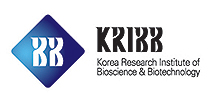
- Functional Metabolites Research Center, KRIBB, 111 Gwahangno, Yuseong-gu, Daejeon 305-806, Republic of Korea.
- Lee IK1, Kim YS, Jang YW, Jung JY, Yun BS
Abstract
The fruiting body of Inonotus obliquus, a medicinal mushroom called chaga, has been used as a traditional medicine for cancer treatment. Although this mushroom has been known to exhibit potent antioxidant activity, the mechanisms responsible for this activity remain unknown. In our investigation for free radical scavengers from the methanolic extract of this mushroom, inonoblins A (1), B (2), and C (3) were isolated along with the known compounds, phelligridins D (4), E (5), and G (6). Their structures were established by extensive spectroscopic analyses. These compounds exhibited significant scavenging activity against the ABTS radical cation and DPPH radical, and showed moderate activity against the superoxide radical anion.
https://www.ncbi.nlm.nih.gov/pubmed/17980585 http://download.xuebalib.com/xuebalib.com.16730.pdf
5. Antioxidant small phenolic ingredients in Inonotus obliquus (persoon) Pilat (Chaga).
Author information:

- Department of Bioengineering and Technology, Kangwon National University, Chuncheon, Korea
- Nakajima Y1, Sato Y, Konishi T.
Abstract
Inonotus obliquus (persoon) Pilat (Chaga, in Russia, kabanoanatake in Japan) is a fungus having been used as a folk medicine in Russia and said to have many health beneficial functions such as immune modulating and anti-cancer activities. In the present study, the antioxidant activity of hot water extract (decoction) of Chaga was precisely compared with those of other medicinal fungi (Agaricus blazei Mycelia, Ganoderma lucidum and Phellinus linteus) showing Chaga had the strongest antioxidant activity among fungi examined in terms of both superoxide and hydroxyl radicals scavenging activities. Further determination of the antioxidant potential of isolated fruiting body (brown part) and Sclerotium (black part) revealed the 80% MeOH extract of fruiting body had the highest potential as high as that of Chaga decoction. Finally, seven antioxidant components were isolated and purified from the 80% MeOH extract of Chaga fruiting body, and their chemical structures were determined as small phenolics as follows: 4-hydroxy-3,5-dimethoxy benzoic acid 2-hydroxy-1-hydroxymethyl ethyl ester (BAEE), protocatechic acid (PCA), caffeic acid (CA), 3,4-dihybenzaladehyde (DB), 2,5-dihydroxyterephtalic acid (DTA), syringic acid (SA) and 3,4-dihydroxybenzalacetone (DBL). Notably, BAEE was assigned as the new compound firstly identified from the natural source in the present study.
https://www.ncbi.nlm.nih.gov/pubmed/17666849
6. Inonotus obliquus protects against oxidative stress-induced apoptosis and premature senescence.
Author information:

- Department of Bioengineering and Technology, Kangwon National University, Korea
- Yun JS1, Pahk JW, Lee JS, Shin WC, Lee SY, Hong EK.
Abstract
In this study, we investigated the cytoprotective effects of Inonotus obliquus against oxidative stress-induced apoptosis and premature senescence. Pretreatment with I. obliquus scavenged intracellular ROS and prevented lipid peroxidation in hydrogen peroxide-treated human fibroblasts. As a result, I. obliquus exerted protective effects against hydrogen peroxide-induced apoptosis and premature senescence in human fibroblasts. In addition, I. obliquus suppressed UV-induced morphologic skin changes, such as skin thickening and wrinkle formation, in hairless mice in vivo and increased collagen synthesis through inhibition of MMP-1 and MMP-9 activities in hydrogen peroxide-treated human fibroblasts. Taken together, these results demonstrate that I. obliquus can prevent the aging process by attenuating oxidative stress in a model of stress-induced premature senescence.
https://yadi.sk/i/Yqiay9ZZ3JzUKr
7. Four new lanostane-type triterpenoids from Inonotus obliquus.
Author information:

- Laboratory of Medicinal Chemistry, Osaka University of Pharmaceutical Sciences, 4-20-1, Nasahara, Takatsuki, Osaka, Japan
- Noriko Handa, Takeshi Yamada, Reiko Tanaka
Abstract
Four new lanostane-type triterpenoids, inonotsuoxodiol B, inonotsuoxodiol C, epoxyinonotsudiol, and methoxyinonotsutriol, were isolated from the sclerotia ofInonotus obliquus. Their structures were determined to be 3β,22R-dihydroxylanosta-9(11),24-dien-7-one, 3β,22R-dihydroxylanosta-7,24-dien-11-one, 9α,11α-epoxy-lanosta-7,24-diene-3β,22R-diol, and 7β-methoxylanosta-8,24-diene-3β,11α,22R-triol on the basis of NMR spectroscopy, including 1D and 2D (
1H–
1H-COSY, NOESY, HMQC, HMBC) NMR spectra, and EIMS.
http://www.sciencedirect.com/science/article/pii/S1874390012000900
8. Antioxidant activities of five polysaccharides from Inonotus obliquus.
Author information:

- College of Light Industry and Food Sciences, South China University of Technology, Guangdong Province, Guangzhou, China
- Huang SQ1, Ding S, Fan L
Abstract
Five polysaccharides (IOP1b, IOP2a, IOP2c, IOP3a and IOP4) were isolated and purified from Inonotus obliquus by DEAE-Sepharose fast flow and SepharoseCL-6B column chromatography. Their chemical and physical characteristics were determined and antioxidant activities were investigated on the basis of hydroxyl radical assay, superoxide radical assay and ferric-reducing antioxidant power assay. The results showed that five polysaccharides exhibited antioxidant activities, and the higher content of uronic acid and proteinous substances, the stronger antioxidant activities of polysaccharides. Besides, molecular weights of polysaccharides also influence their antioxidant activities. IOP3a and IOP4 showed higher antioxidant properties than IOP1b, IOP2a and IOP2c.
https://www.ncbi.nlm.nih.gov/pubmed/22484729
9. Antioxidative properties of crude polysaccharides from Inonotus obliquus.
Author information:

- College of Science, Northwest A&F University, Yangling, Shaanxi 712100, China
- Mu H, Zhang A, Zhang W, Cui G, Wang S, Duan J.
Abstract
The mushroom Inonotus obliquus has been widely used as a folk medicine in Russia, Poland and most of the Baltic countries. In this study, water-soluble and alkali-soluble crude polysaccharides (IOW and IOA) were isolated from I. obliquus, and the carbohydrate-rich fractions IOW-1 and IOA-1 were obtained respectively after deproteination and depigmentation. Their contents, such as neutral carbohydrate, uronic acid and protein, were measured. Their antioxidant properties against chemicals-induced reactive species (ROS) including 1,1'-Diphenyl-2-picrylhydrazyl (DPPH) radical, hydroxyl radical and superoxide anion radical, as well as their protective effects on H(2)O(2)-induced PC12 cell death were investigated. Results showed that I. obliquus polysaccharides can scavenge all ROS tested above in a dose-dependent manner. IOA and its product IOA-1 could rescue PC12 cell viability from 38.6% to 79.8% and 83.0% at a concentration of 20μg/mL. Similarly, IOW and its product IOW-1 at the same dose, can also increase cell viability to 84.9% and 88.6% respectively. The antioxidative activities of water-soluble and alkali-soluble polysaccharide constituents from I. obliquus might contribute to diverse medicinal and nutritional values of this mushroom.
https://www.ncbi.nlm.nih.gov/pubmed/22942760 https://yadi.sk/i/zJtduUR83JzjcA
10. Accumulation of antioxidant phenolic constituents in submerged cultures of Inonotus obliquus.
Author information:
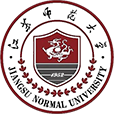
- Key Laboratory for Biotechnology on Medicinal Plants of Jiangsu Province, Xuzhou Normal University, Xuzhou, China
- Zheng W1, Zhang M, Zhao Y, Wang Y, Miao K, Wei Z.
Abstract
Phenolic compounds produced by sclerotia of Inonotus obliquus are the active constituents responsible for antioxidant activities. In this study, I. obliquus was grown in a continuously stirred tank reactor (CSTR) to explore how it accumulates phenolic compounds in different culture media and whether these compounds possess antioxidant activities. Phenolic compounds produced by I. obliquus in the control medium consisted of melanins, flavonoids, polyphenols and small phenolics. Their accumulation was affected by adding H(2)O(2) to the medium, where increased levels of total intracellular phenols (TIP) and melanins, but less total extracellular phenol (TEP) occurred. Simultaneous exposure to H(2)O(2) and arbutin resulted in a further increase in TIP production and reduced accumulation of TEP. Both TIP and TEP obtained at different culture ages and media were active in scavenging superoxide anion and DPPH radicals. Therefore, production of phenolic compounds by I. obliquus is enhanced by imposing oxidative stress, which might allow it to be exploited as a reliable source of pharmaceutically important phenolic compounds.
https://www.ncbi.nlm.nih.gov/pubmed/18824349
11. Chemical modification and antioxidant activities of polysaccharide from mushroom Inonotus obliquus.
Author information:

- Tianjin Key Laboratory for Modern Drug Delivery & High-Efficiency, School of Pharmaceutical Science and Technology, Tianjin University, Tianjin, PR China.
- Ma L1, Chen H, Zhang Y, Zhang N, Fu L.
Abstract
Chemical modification polysaccharides exerted potent biological property which was related to the physicochemical properties. In the present study, polysaccharides from Inonotus obliquus were modified by suflation, acetylation and carboxymethylation. The physicochemical and antioxidant properties of I. obliquus polysaccharide (IOPS) and its derivatives were comparatively investigated by chemical methods, gas chromatography, size exclusion chromatography, scanning electron micrograph, infrared spectra and circular dichroism spectra, and ferric reducing power assay and lipid peroxidation inhibition assay, respectively. Results showed that physicochemical and antioxidant properties of IOPS were differed each other after the chemical modification of suflation, acetylation and carboxymethylation. Among the three derivatives, acetylationed polysaccharide (Ac-IOPS) resulted in lower molecular weight distribution, lower intrinsic viscosity, a hyperbranched conformation, higher antioxidant abilities on ferric-reducing power and lipid peroxidation inhibition activity compared with the native polysaccharide IOPS. Ac-IOPS might be explored as a novel potential antioxidant for human consumption.
https://www.ncbi.nlm.nih.gov/pubmed/24750732
12. Optimization of Subcritical Water Extraction of Polysaccharides from Inonotus Obliquus and their Antioxidant Activities.
Author information:
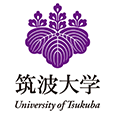
- Graduate School of Life and Environmental Sciences, University of Tsukuba, Ibaraki, Japan
- Xi Yuan , Ling Li , Hongyi Sun , Shuang Sun & Zhenya Zhang
Abstract
Subcritical water extraction (SWE) of Inonotus Obliquus polysaccharides (IOP) was investigated using response surface methodology (RSM) with a design by Box–Behnken design (BBD). Results showed that the optimum SWE conditions for IOP production were as follows: extraction temperature 194°C, residence time 5.36 min and liquid-solid ratio 53 mL/g, yielding 168.80 ± 0.59 mg/g of IOP, which was in close agreement with the values predicted by the mathematical model. FT-IR spectra of the polysaccharides extracted by SWE and hot water extraction (HWE) were compared as well. Moreover, in vitro antioxidant assays revealed that SWE-IOP exhibited stronger scavenging activity that HWE-IOP. This investigation suggests that polysaccharides of Inonotus Obliquus extracted by SWE could be further developed as a potential antioxidant resource for dietary supplements of functional food.
https://www.researchgate.net/
13. Ball milling improves extractability and antioxidant properties of the active constituents of mushroom Inonotus obliquus powders.
Author information:

- Tianjin Key Laboratory for Modern Drug Delivery & High-Efficiency, School of Pharmaceutical Science and Technology, Tianjin University, China
- Jia Wang, Cong Wang, Weiwei Li, Yuxiang Pan, Guoqi Yuan & Haixia Chen
Abstract
Inonotus obliquus has been used as a folk remedy for a long time. An improved method using fine grinding by ball mill was investigated, and the main chemical components and physicochemical properties of Inonotus obliquus powders were analysed. The Inonotus obliquus fine grinding powders were prepared by pulverising the coarse powder with planetary ball mill for different time. The results showed that the yields of polysaccharides increased from 41.08 mg g−1 (coarse powder) to 319.62 mg g−1, and the yields of polyphenols were also increased fourfold in ball-milled powders as compared to the untreated one. Ball-milled powders showed higher values in the bulk density, angles of repose and slide, water solubility index and swelling capacity (P < 0.05), but lower values in the water-holding capacity and oil-holding capacity. The shape and surface morphology of the powders were changed after ball mill treatment. The antioxidant properties of the extracts from ball-milled powders were significantly improved (P < 0.05). The results will be helpful for the application of Inonotus obliquus in food and pharmaceutical industries.
https://www.researchgate.net/Chaga supports and restores the immune system
1. Immunostimulating Activity by Polysaccharides Isolated from Fruiting Body of Inonotus obliquus.
Author information:

- Department of Bioengineering and Technology, Kangwon National University, Chuncheon, Korea
- Dong Pil Won, Jong Seok Lee, Duck Soo Kwon, Keun Eok Lee, Won Cheol Shin, and Eock Kee Hong
Abstract
In this study, we investigated the immunostimulating activity of polysaccharides isolated from fruiting body of Inonotus obliquus (PFIO). Additionally, the signaling pathway of PFIO-mediated macrophage activation was investigated in RAW264.7 macrophage cells. We found that PFIO was capable of promoting NO/ROS production, TNF-α secretion and phagocytic uptake in macrophages, as well as cell proliferation, comitogenic effect and IFN-γ/IL-4 secretion in mouse splenocytes. PFIO was able to induce the phosphorylation of three MAPKs as well as the nuclear translocation of NF-κB, resulting in activation of RAW264.7 macrophages. PFIO also induced the inhibition of TNF-α secretion by anti-TLR2 mAb, consequently, PFIO might be involved in TNF-α secretion via the TLR2 receptor. In addition, our results showed that oral administration of PFIO suppressed in vivo growth of melanoma tumor in tumorbearing mice. In conclusion, our experiments presented that PFIO effectively promotes macrophage activation through the MAPK and NF-κB signaling pathways, suggesting that PFIO may potentially regulate the immune response.
https://www.ncbi.nlm.nih.gov/pmc/articles/PMC3932689/
2. Antitumor and immunomodulatory activity of water-soluble polysaccharide from Inonotus obliquus.
Author information:

- State Key Laboratory of Dairy Biotechnology, Technology Center of Bright Dairy & Food Co. Ltd., China
- Fan L, Ding S, Ai L, Deng K.
Abstract
The medicinal mushroom Inonotus obliquus has been used as a folk remedy for a long time in Russia and East-European countries to treat gastrointestinal cancer, cardiovascular disease and diabetes. In our study, a water-soluble polysaccharide (ISP2a) was successfully purified from I. obliquus by DEAE-Sepharose CL-6B and Sepharose CL-6B column chromatography. In vivo ISP2a had not only shown antitumor activity, but also could significantly enhance the immune response of tumor-bearing mice. In addition, ISP2a significantly enhanced the lymphocyte proliferation and increased the production of TNF-α. Results of these studies demonstrated that ISP2a had a potential application as natural antitumor agent with immunomodulatory activity.
https://www.ncbi.nlm.nih.gov/pubmed/22840014
3. Immunostimulating activity by polysaccharides isolated from fruiting body of Inonotus obliquus.
Author information:

- Department of Bioengineering and Technology, Kangwon National University, Chuncheon, Korea
- Won DP1, Lee JS, Kwon DS, Lee KE, Shin WC, Hong EK
Abstract
In this study, we investigated the immunostimulating activity of polysaccharides isolated from fruiting body of Inonotus obliquus (PFIO). Additionally, the signaling pathway of PFIO-mediated macrophage activation was investigated in RAW264.7 macrophage cells. We found that PFIO was capable of promoting NO/ROS production, TNF-α secretion and phagocytic uptake in macrophages, as well as cell proliferation, comitogenic effect and IFN-γ/IL-4 secretion in mouse splenocytes. PFIO was able to induce the phosphorylation of three MAPKs as well as the nuclear translocation of NF-κB, resulting in activation of RAW264.7 macrophages. PFIO also induced the inhibition of TNF-α secretion by anti-TLR2 mAb, consequently, PFIO might be involved in TNF-α secretion via the TLR2 receptor. In addition, our results showed that oral administration of PFIO suppressed in vivo growth of melanoma tumor in tumorbearing mice. In conclusion, our experiments presented that PFIO effectively promotes macrophage activation through the MAPK and NF-κB signaling pathways, suggesting that PFIO may potentially regulate the immune response.
https://www.ncbi.nlm.nih.gov/pubmed/21191814
4. Immunomodulatory Activity of the Water Extract from Medicinal Mushroom Inonotus obliquus.
Author information:

- Laboratory of Macromolecular Interactions, School of Biological Sciences and Institute of Microbiology, Seoul National University, Seoul, Korea
- Kim YR
Abstract
The immunomodulatory effect of aqueous extract of Inonotus obliquus, called as Chaga, was tested on bone marrow cells from chemically immunosuppressed mice. The Chaga water extract was daily administered for 24 days to mice that had been treated with cyclophosphamide (400 mg/kg body weight), immunosuppressive alkylating agent. The number of colony-forming unit (CFU)-granulocytes/macrophages (GM) and erythroid burst-forming unit (BFU-E), increased almost to the levels seen in non-treated control as early as 8 days after treatment. Oral administration of the extract highly increased serum levels of IL-6. Also, the level of TNF-α was elevated by the chemical treatment in control mice, whereas was maintained at the background level in the extract-treated mice, indicating that the extract might effectively suppress TNF-α related pathologic conditions. These results strongly suggest the great potential of the aqueous extract from Inonotus obliquus as immune enhancer during chemotherapy.
https://www.ncbi.nlm.nih.gov/pubmed/24049493
5. Immuno-stimulating effect of the endo-polysaccharide produced by submerged culture of Inonotus obliquus.
Author information:

- Department of Biotechnology, College of Engineering, Yonsei University, Shinchon-dong, Seodaemoon-gu, Seoul, South Korea
- Kim YO, Han SB, Lee HW, Ahn HJ, Yoon YD, Jung JK, Kim HM, Shin CS
Abstract
Inonotus obliquus BELYU1102 was selected from 12 different strains of Inonotus as a producer of immuno-stimulating polysaccharide. After a batch fermentation of I. obliquus BELYU1102 was carried out in a 300 l pilot vessel, endo-polysaccharide and exo-polysaccharide were both obtained. The proliferation activity of endo-polysaccharide for splenic cells was much higher than the activity of exo-polysaccharide. The active endo-polysaccharide was produced primarily during the late stationary phase. Enhanced proliferation and polyclonal IgM antibody production were observed in B cells by purified water-soluble endo-polysaccharide. Nitrite production and expression of IL-1beta, IL-6, TNF-alpha, and iNOS in macrophages were also enhanced. However, the endo-polysaccharide did not affect the proliferation of T cells, the IL-2 expression of Th1 cells, or the IL-4 expression of Th2 cells. The endo-polysaccharide showed activities similar to lipopolysaccharide (LPS) for B cells and macrophages, but there was a large difference between the two polysaccharides because cellular activations induced by endo-polysaccharide were not affected by polymyxin B, a specific inhibitor of LPS. The endo-polysaccharide appeared to have other cellular binding sites with TLR-4 and did not show a direct toxicity against tumor cells. However, indirect anti-cancer effects via immuno-stimulation were observed. The mycelial endo-polysaccharide of I. obliquus is a candidate for use as an immune response modifier. Submerged mycelial cultures are advantageous for industrial production of polysaccharides.
https://www.ncbi.nlm.nih.gov/pubmed/15970296
6. Inonotus obliquus extracts suppress antigen-specific IgE production through the modulation of Th1/Th2 cytokines in ovalbumin-sensitized mice.
Author information:

- Lab of Hygienic Pharmacy, College of Pharmacy, Sookmyung Women's University, 52 Hyochangwon-gil, Youngsan-ku, Seoul, Republic of Korea.
- Ko SK, Jin M, Pyo MY
Abstract
Etnopharmacological relevance: Chaga mushroom (Inonotus obliquus, IO) has been used as a folk remedy for cancer, digestive system diseases, and other illnesses in Russia and Eastern Europe. AIM OF THE STUDY: In the present study, we investigated the immunomodulating effects of IO through in vivo and ex vivo studies. MATERIALS AND METHODS: Serum immunoglobulins (IgE, IgG(1), and IgG(2a)) and cytokines (interleukin (IL)-4, interferon (IFN)-γ, and IL-2) were measured in concanavalin A (ConA)-stimulated splenocytes and CD4(+) T cells. The nitric oxide (NO) secretion of lipopolysaccharide (LPS)-stimulated peritoneal macrophages was also measured after oral administration of 50, 100, or 200 mg kg(-1) d(-1) IO hot water extract (IOE) to ovalbumin (OVA)-sensitized BALB/c mice. RESULTS: We found that the OVA-induced increase in serum IgE and IgG(2a) was significantly suppressed when IOE was orally administered after the second immunization with OVA. ConA stimulation in spleen cells isolated from OVA-sensitized mice treated with 100 mg kg(-1) IOE resulted in a 25.2% decrease in IL-4 production and a 102.4% increase in IFN-γ, compared to the controls. Moreover, IL-4, IFN-γ, and IL-2 were significantly reduced after ConA stimulation in isolated CD4(+)T cells. We also determined that IOE inhibits the secretion of NO from LPS-stimulated peritoneal macrophages ex vivo. CONCLUSIONS: We suggest that IO modulates immune responses through secretion of Th1/Th2 cytokines in immune cells and regulates antigen-specific antibody production.
https://www.ncbi.nlm.nih.gov/pubmed/21820502
Chaga reduces blood sugar levels
1. Insulin-sensitizing and beneficial lipid-metabolic effects of the water-soluble melanin complex extracted from Inonotus obliquus.
Author information:

- School of Life Science, Handong Global University, Korea
- Lee JH, Hyun CK.
Abstract
These results suggest that the water-soluble melanin complex of I. obliquus exerts antihyperglycemic and beneficial lipid-metabolic effects, making it a candidate for promising antidiabetic agent.
https://www.ncbi.nlm.nih.gov/pubmed/24615848
2. Terpenoids with alpha-glucosidase inhibitory activity from the submerged culture of Inonotus obliquus.
Author information:

- College of Pharmaceutical Science, Zhejiang University of Technology, China
- Institute of Biotechnology, Hangzhou East China Pharmaceutical Group, China
- You-Min Ying, Lin-Yan Zhang, Xia Zhang, Hai-Bo Bai, Dong-E Liang, Lie-Feng Ma, Wei-Guang Shan, Zha-Jun Zhan
Abstract
Lanostane-type triterpenoids, inotolactones A and B, a drimane-type sesquiterpenoid, inotolactone C, and five known terpenoids 6b-hydroxy-trans-dihydroconfertifolin, inotodiol, 3b,22-dihydroxyanosta-7,9(11),24-triene, 3b-hydroxycinnamolide, and 17-hydroxy-ent-atisan-19-oic acid, were isolated from the submerged culture of chaga mushroom, Inonotus obliquus. Their structures were characterized by spectroscopic methods, including MS and NMR (1D and 2D) spectroscopic techniques. Inotolactones A and B, examples of lanostane-type triterpenoids bearing a,b-dimethyl, a,b-unsaturated d-lactone side chains, exhibited more potent alpha-glucosidase inhibitory activities than the positive control acarbose. This finding might be related to the anti-hyperglycemic properties of the fungus and to its popular role as a diabetes treatment. In addition, a drimane-type sesquiterpenoid and an atisane-type diterpenoid were isolated from I. obliquus.
https://yadi.sk/i/UT_0uTtt3JzPAn
3. Glycosidase inhibitory activity and antioxidant properties of a polysaccharide from the mushroom Inonotus obliquus.
Author information:

- Tianjin Key Laboratory for Modern Drug Delivery & High-EfficiencySchool of Pharmaceutical Science and Technology, Tianjin University, China
- Haixia Chen, Xueming Lu, Zhishuang Qu, Liping Zhang
Abstract
A water-soluble polysaccharide from Inonotus obliquus (IOPS) was isolated from the mushroom Inonotus obliquus (Fr.) Pilat. The chemical compositions, molecular weight and inhibitory activities on glycosidase and antioxidant properties of IOPS were investigated. The results indicated that IOPS was an acid protein-bound polysaccharide, with a molecular weight of 1.7 × 104 Da and the contents of neutral sugar, protein and uronic acids being 42.5, 18.5 and 6.1%, respectively. IOPS exhibited an inhibitory activity against α-glucosidase with the IC50 value of 93.3 µg/mL, whereas it had no effective inhibition on α-amylase. Results of antioxidant activity assays revealed that IOPS had inhibitory activity on the concentration-dependent quenching of 1,1-Diphenyl-2-picrylhydrazyl and hydroxyl radicals. Furthermore, IOPS inhibited the formation of thiobarbituric acid-reactive substances in Fe2+/ascorbate-induced lipid peroxidation in rat liver tissue. These results clearly demonstrated that IOPS was one of the main bioactive components of I. obliquus that contributed to hypoglycemic activity and antioxidant activity.
Practical application
Diabetes mellitus is one of the primary threats to human health because of its increasing prevalence, chronic course and disabling complications. Postprandial hyperglycemia plays an important role in the development of type 2 diabetes mellitus and complications associated with the disease. One therapeutic approach to decrease postprandial hyperglycemia is to retard the absorption of glucose through inhibition of carbohydrate-hydrolyzing enzymes in the digestive organs. In this study, a polysaccharide isolated from the mushroom Inonotus obliquus (IOPS) was shown to have notable glycosidase inhibitory effects and antioxidant activities. This research will benefit for the investigation of effective and safe α-glucosidase inhibitors from natural materials. IOPS could be a good candidate for application in food and medicinal fields. It might be developed for functional food or lead compounds for use in antidiabetes.
https://www.researchgate.net/
4. Phytochemical characteristics and hypoglycaemic activity of fraction from mushroom Inonotus obliquus.
Author information:

- Tianjin Key Laboratory for Modern Drug Delivery and High-Efficiency, School of Pharmaceutical Science and Technology, Tianjin University, China
- Lu X, Chen H, Dong P, Fu L, Zhang X
Abstract
BACKGROUND: Inonotus obliquus is a medicinal mushroom that has been used as an effective agent to treat various diseases such as diabetes, tuberculosis and cancer. In order to elucidate the active fraction and its constituents, the effects of ethyl acetate fraction from I. obliquus (EAFI) on hyperglycaemia were investigated and the main constituents of EAFI were isolated and identified. RESULTS: EAFI treatment led to a significant decrease in blood glucose level (P < 0.05) in alloxan-induced diabetic mice. It significantly decreased the total cholesterol level in serum, increased glutathione peroxidase activity and improved the growth physiological characteristics. In addition, EAFI treatment decreased the levels of triglyceride and malondialdehyde and increased the high-density lipoprotein cholesterol level in serum and the hepatic glycogen level in liver of diabetic mice. Five compounds were isolated from EAFI and identified as lanosterol (1), 3beta-hydroxy-lanosta-8,24-diene-21-al (2), inotodiol (3), ergosterol peroxide (4) and trametenolic acid (5) by spectral methods. Inotodiol and trametenolic acid were found to have an inhibitory effect on alpha-amylase activity and a scavenging effect on 1,1-diphenyl-2-picrylhydrazyl radicals. CONCLUSION: EAFI showed significant antihyperglycaemic and antilipidperoxidative effects in alloxan-induced diabetic mice. Terpenoid and sterol compounds appeared to be the major active constituents of I. obliquus.
https://www.ncbi.nlm.nih.gov/pubmed/20355042
5. Antihyperglycemic and antilipidperoxidative effects of dry matter of culture broth of Inonotus obliquus in submerged culture on normal and alloxan-diabetes mice.
Author information:

- Lab of Pharmaceutical Engineering, School of Medicine and Pharmaceutics, Jiangnan University, Wuxi, PR China
- Sun JE, Ao ZH, Lu ZM, Xu HY, Zhang XM, Dou WF, Xu ZH
Abstract
AIM OF THE STUDY: The antihyperglycemic and antilipidperoxidative effects of the dry matter of culture broth (DMCB) of Inonotus obliquus were investigated. MATERIALS AND METHODS: The normal, glucose-induced hyperglycemic and alloxan-induced diabetic mice were used to evaluate the antihyperglycemic and antilipidperoxidative effects of the DMCB of Inonotus obliquus. RESULTS: Treatment with the DMCB (500 and 1000 mg/kg body weight) exhibited a mild hypoglycemic effect in normal mice, and failed to reduce the peak glucose levels after glucose administration. However, euglycemia was achieved in the DMCB of Inonotus obliquus (1000 mg/kg) and glibenclamide-treated mice after 120 min of glucose loading. In alloxan-induced diabetic mice, the DMCB (500 and 1000 mg/kg body weight for 21 days) showed a significant decrease in blood glucose level, the percentages reduction on the 7th day were 11.90 and 15.79%, respectively. However, feeding of this drug for 3 weeks produced reduction was 30.07 and 31.30%. Furthermore, the DMCB treatment significantly decreased serum contents of free fatty acid (FFA), total cholesterol (TC), triglyceride (TG) and low density lipoprotein-cholesterol (LDL-C), whereas effectively increased high density lipoprotein-cholesterol (HDL-C), insulin level and hepatic glycogen contents in liver on diabetic mice. Besides, the DMCB treatment significantly increased catalase (CAT), superoxide dismutase (SOD) and glutathione peroxidase (GPx) activities except for decreasing maleic dialdehyde (MDA) level in diabetic mice. Histological morphology examination showed that the DMCB restored the damage of pancreas tissues in mice with diabetes mellitus. CONCLUSIONS: The results showed that the DMCB of Inonotus obliquus possesses significant antihyperglycemic, antilipidperoxidative and antioxidant effects in alloxan-induced diabetic mice.
https://www.ncbi.nlm.nih.gov/pubmed/18434051 https://yadi.sk/i/jl4C1ln73JzP5q
6. Anti-diabetic effects of Inonotus obliquus polysaccharides-chromium (III) complex in type 2 diabetic mice and its sub-acute toxicity evaluation in normal mice.
Author information:

- Tianjin Key Laboratory for Modern Drug Delivery & High-Efficiency, School of Pharmaceutical Science and Technology, Tianjin University, Tianjin, 300072, PR China.
- Wang C, Chen Z, Pan Y, Gao X, Chen H
Abstract
Polysaccharides are important bioactive ingredients from Inonotus obliquus. This study aimed to synthesize and characterize a novel I. obliquus polysaccharides-chromium (III) complex (UIOPC) and investigate the anti-diabetic effects in streptozotocin (STZ) induced type 2 diabetes mellitus (T2DM) mice and sub-acute toxicity in normal mice. The molecular weight of UIOPC was about 11.5 × 10 (4) Da with the chromium content was 13.01% and the chromium was linked with polysaccharides through coordination bond. After treatment of UIOPC for four weeks, the body weight, fasting blood glucose (FBG) levels, plasma insulin levels of the diabetic mice were significantly reduced when compared with those of the diabetic mice (p < 0.05). The results on serum profiles and antioxidant enzymes activities revealed that UIOPC had a positive effect on hypoglycemic and antioxidant ability. Histopathology results showed that UIOPC could effectively alleviate the STZ-lesioned tissues in diabetic mice. Furthermore, high dose administration of UIOPC had no obviously influence on serum profiles levels and antioxidant ability of the normal mice and the organ tissues maintained organized and integrity in the sub-acute toxicity study. These results suggested that UIOPC might be a good candidate for the functional food or pharmaceuticals in the treatment of T2DM.
https://www.ncbi.nlm.nih.gov/pubmed/28087233
Chaga is an effective tool in psoriasis treatment
1. Treatment of psoriasis with chaga fungus preparations.
Author information:
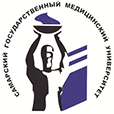
- Clinic of Skin and Venereal Diseases (Head - prof. E.A. Dosychev), Kuibyshev Medical Institute and Brest Regional Skin and Venereal clinic (chief physician I.H. Brudner).
Conclusion According to our observations, psoriasis-therapy with Chaga is especially successful in cases when psoriasis occurs in combination with chronic inflammatory diseases of gastrointestinal tract, liver and biliary system which manifest themselves before or during the course of psoriasis. The maximum efficiency of Chaga psoriasis treatment is noted after 9 to 12 weeks of continuous intake. Continued regular intake of Chaga lead to a full disappearance of psoriatic lesions without any extra treatments. Long and regular Chaga intake showed an improvement in gastrointestinal functions, increased vitality and general tonus in all patients, with no exceptions. The lab test results of blood, stomach acid, gall, urine and stool also showed improvement. Most probably, the Chaga treatment of psoriasis may provide a long lasting remission without any other medication or therapies needed. When prescribing Chaga preparations to patients the GP needs to warn them about the time involved before the therapeutic effect becomes noticeable; 9 – 12 weeks. Patients should also be stimulated to normalize their diet and to rest more. There were no side effects or complications observed during the Chaga treatments. Chaga therapy shows good potential in outpatient treatments. The mechanism of the therapeutic action of Chaga in psoriasis should be studied further.
https://yadi.sk/i/rJRi6EXK3JzbwfChaga regulates the metabolic processes in the organism, normalizes the work of gastrointestinal tract
1. Inonotus obliquus polysaccharide regulates gut microbiota of chronic pancreatitis.
Author information:
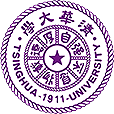
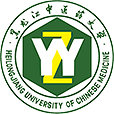
- College of Resources and Environmental Science, Northeast Agricultural University,China.School of Life Sciences, Tsinghua University,China.
- The Shenzhen Key Laboratory of Gene and Antibody Therapy, State Key Laboratory of Health Science and Technology (prep), Center for Biotechnology & Biomedicine and Division of Life & Health Sciences, Graduate School at Shenzhen, Tsinghua University, China.
- Drug Safety Evaluation Center, Heilongjiang University of Chinese Medicine, China.
- Hu Y, Teng C, Yu S, Wang X, Liang J, Bai X, Dong L, Song T, Yu M, Qu J
Abstract
Polysaccharide is efficient in attenuation of metabolic ailments and modulation of gut microbiota as prebiotics. The therapeutic effect of Inonotus obliquus polysaccharide (IOP) on chronic pancreatitis (CP) in mice has been validated in our previous study. However, it is not clear whether IOP is conducive to maintaining the homeostasis between gut microbiota and host. The aim of this study is to testify the potential effects of IOP on gut microbiota composition and diversity in mice with CP. The changes in glutathione peroxidase (GSH-PX), total antioxidant capacity (TAOC), tumor necrosis factor alpha (TNF-α), transforming growth factor beta (TGF-β), lipase and trypsin levels were measured by commercial assay kits, meanwhile the gut microbiota composition and diversity were analyzed by high throughput sequencing. The IOP treatment increased GSH-PX and TAOC levels, and decreased TNF-α, TGF-β, lipase and trypsin levels in CP mice. It was also observed that gut microbiota in IOP treated groups were less diverse than others in terms of lower Shannon diversity index and Chao 1 estimator. IOP increased the proportion of Bacteroidetes and decreased that of Firmicutes at phylum level. Bacteroidetes was found positively correlated with GSH-PX and TAOC, and Firmicutes correlated with TNF-α, TGF-β, and lipase. In conclusion, administration of IOP could regulate gut microbiota composition and diversity to a healthy profile in mice with CP, and some bacterial phylum significantly correlated with characteristic parameters.
https://www.ncbi.nlm.nih.gov/pubmed/28197985
Chaga in combating Hepatitis-C, the herpes virus, HIV-1 and various strains of influenza
1. Antiviral activity of Inonotus obliquus fungus extract towards infection caused by hepatitis C virus in cell cultures.
Author information:

- D. I. Ivanovsky Institute of Virology, Ministry of Health Care and Social Development of the Russian Federation, Moscow, Russia.
- Shibnev VA, Mishin DV, Garaev TM, Finogenova NP, Botikov AG, Deryabin PG.
Abstract
Fractions of Inonotus obliquus fungus water extract exhibited a virucidal effect towards hepatitis C virus: it 100-fold reduced its infective properties within 10 min. The antiviral effects of fungus extracts manifested after preventive (24 h before infection) and therapeutic use (during infection of porcine embryo kidney cells). Moreover, the data indicate that the birch fungus extracts inhibit production of infective virus by porcine embryo kidney cells.
https://www.ncbi.nlm.nih.gov/pubmed/22462058
2. Antiviral activity of aqueous extracts of the birch fungus Inonotus obliquus on the human immunodeficiency virus.
Author information:

- The D.I. Ivanovsky Institute of Virology Federal State Budgetary Institution “Federal Research Centre for Epidemiology and Microbiology named after the honorary academician N.F. Gamaleya” of the Ministry of Health of the Russian Federation,123098, Moscow, Russia
- Shibnev V.A., Garaev T.M., Finogenova M.P., Kalnina L.B., Nosik D.N.
Abstract Fractions of aqueous and water–alcohol extracts of the birch fungus
Inonotus obliquus have antiviral effect against the human immunodeficiency virus type 1 (HI V-1). Antiviral properties of low toxic extracts were manifested in the concentration of 5.0 μg/ml upon simultaneous application with the virus in the lymphoblastoid cells culture MT-4. The extract of the birch fungus can be used for development of new antiviral drugs, inhibitors of HI V-1 replication when used both in the form of individual drugs and as a part of complex therapy.
https://yadi.sk/i/iH2sy28Z3KA97t






































































